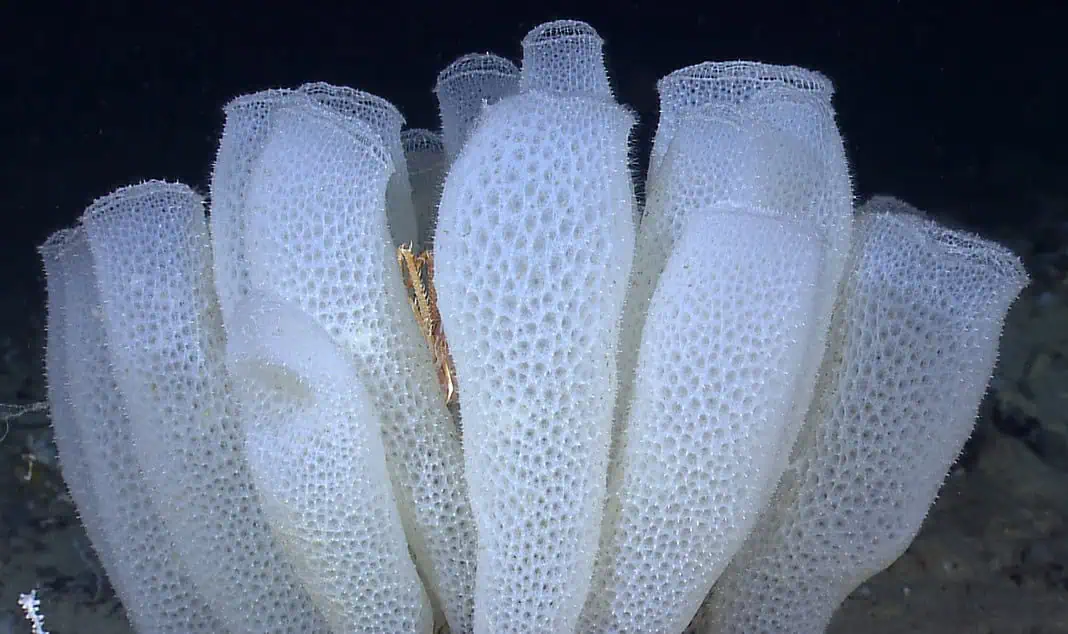The Venus flower basket sponge, with its delicate glass-like lattice outer skeleton, has long intrigued researchers seeking to explain how this fragile-seeming creature’s body can withstand the harsh conditions of the deep sea where it lives.
Now, researchers have found another cool engineering feat of this ancient animal’s structure: its ability to filter feed using only the faint ambient currents of the ocean depths, no pumping required.
This discovery of natural “zero energy” flow control by an international research team co-led by the University of Rome Tor Vergata and NYU’s Tandon School of Engineering could help engineers design more efficient chemical reactors, air purification systems, heat exchangers, hydraulic systems and aerodynamic surfaces.
In a study published in Physical Review Letters, the team found through extremely high-resolution computer simulations how the skeletal structure of the Venus flower basket sponge (“Euplectella aspergillum“) diverts very slow, deep sea currents to flow upwards into its central body cavity, so it can feed on plankton and other marine detritus it filters out of the water.
The sponge pulls this off via its spiral, ridged outer surface that functions like a spiral staircase. This allows it to passively draw water upwards through its porous, lattice-like frame, all without the energy demands of pumping.
According to Maurizio Porfiri, NYU Tandon Institute Professor and director of its Center for Urban Science + Progress (CUSP), who co-led the study and co-supervised the research:
“Our research settles a debate that has emerged in recent years: the Venus flower basket sponge may be able to draw in nutrients passively, without any active pumping mechanism. It’s an incredible adaptation allowing this filter feeder to thrive in currents normally unsuitable for suspension feeding.”
At higher flow speeds, the lattice structure helps reduce drag on the organism. But it’s in the near-stillness of the deep ocean floors that this natural ventilation system is most remarkable, and demonstrates just how well the sponge accommodates its harsh environment.
The study found that the sponge’s ability to passively draw in food works only at the very slow current speeds – just centimeters per second – of its habitat.
Giacomo Falcucci of Tor Vergata University of Rome and Harvard University, the paper’s first author, said:
“From an engineering perspective, the skeletal system of the sponge shows remarkable adaptations to its environment, not only from the structural point of view, but also for what concerns its fluid dynamic performance. The sponge has arrived at an elegant solution for maximizing nutrient supply while operating entirely through passive mechanisms.”
Check out the research here.

